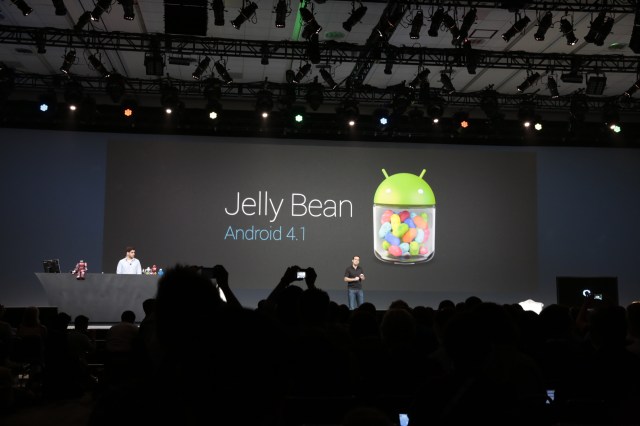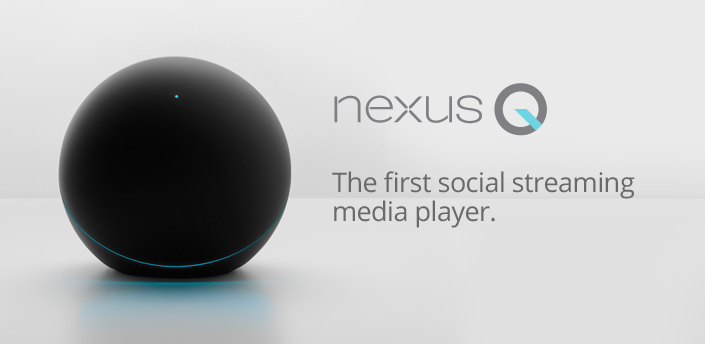Yesterday was day one of the Google I/O Developers Conference 2012 at the Moscone Center in San Francisco, CA.
The Keynote speech focused on the following areas:
 Google Android 4.1: Jelly Bean, these are the key new features:
Google Android 4.1: Jelly Bean, these are the key new features:
- Google Now, you bring up Google Now by swiping up on the home-screen, which brings up a list of various “cards”. These cards show things like your schedule, your route to work (and how long it takes to get there), the sports teams you like and recent scores, travel plans, and nearby places you might want to eat, it basis this information on your search and use history.
- Keyboard, text entry is updated with a new predictive function. As you type Jelly Bean will attempt to guess what your next word will be, allowing you type faster. This feature was recently presented by RIM for the Blackberry 10 OS. Voice text, allows you to type using voice recognition, iOS can do this with Siri, but Jelly Bean takes it one step further by allowing you to use voice text when your offline. Siri, requires internet connection to Apple’s data-centers for processing Siri voice functions.
- Notifications, are improved by allowing you interact directly with notifications without launching into other apps. Like something on Facebook, view your incoming Gmail email, respond to a text message, return a call all from within the notification center. You can also now expand individual notifications by two finger swiping down on them, and as before delete notifications by swiping to them to the left.
- Android Beam, was first introduced in Ice Cream Sandwich but is improved in Jelly Bean. Android Beam now lets you tap your phone to any other NFC-enabled Android Beam phone to share photos and videos. You can also automatically pair any NFC-capable Bluetooth device, including speakers, headsets, etc., with your phone by simply tapping the phone against the device. “It’s that easy.”
- Camera, app has been slightly improved. Swipe for a quick preview of the last photo taken, continue swiping to see all photos taken, pinch to shrink the gallery into a film strip which will allow users to quickly navigate to specific image, swipe an image from the film strip to easily delete it.
Google Android is clearing maturing and Google is claiming there is now 400,000 Android devices in use with a million new devices being activated everyday.
 Google Nexus 7 Tablet, the first tablet to be sold under the Google monicker (although it was manufactured by Acer). It has been introduced at a price point, that should put it direct competition with the current best selling Android Tablet, the Amazon Kindle Fire, although the Kindle Fire 2 could see a July release which should keep the competition strong in the Android tablet market. Here’s a quick breakdown of the key features and specs for the Nexus 7.
Google Nexus 7 Tablet, the first tablet to be sold under the Google monicker (although it was manufactured by Acer). It has been introduced at a price point, that should put it direct competition with the current best selling Android Tablet, the Amazon Kindle Fire, although the Kindle Fire 2 could see a July release which should keep the competition strong in the Android tablet market. Here’s a quick breakdown of the key features and specs for the Nexus 7.
- Two versions available, a 8GB version for $199, and a 16GB version for $249
- Quad-core Tegra 3 processor packing a 12-core GPU and 1GB of on-board RAM
- Seven-inch, 1280×800 IPS display, with 216ppi density
- 802.11 b/g/n wireless networking (but no 3G or 4G radio)
- 1.2 MegaPixel front facing camera
- MicroUSB Port
- NFC (Near Field Communication) chip
 Google Nexus Q, streams your favorite entertainment directly from the cloud to your living room. Just use the Google Play and YouTube apps on your Android phone or tablet to surf an ocean of music, TV, movies and videos, and Nexus Q will play it all on the biggest speakers and screen in the house. Priced at $299, here are the basic specs:
Google Nexus Q, streams your favorite entertainment directly from the cloud to your living room. Just use the Google Play and YouTube apps on your Android phone or tablet to surf an ocean of music, TV, movies and videos, and Nexus Q will play it all on the biggest speakers and screen in the house. Priced at $299, here are the basic specs:
- Android 4.0 (Ice Cream Sandwich), assume this will upgrade to 4.1 when its ready
- OMAP4460 (dual ARM Cortex-A9 CPUs and SGX540 GPU)
- 1GB LPDDR RAM
- 16GB NAND flash memory
- Wi-Fi 802.11a/b/g/n, Bluetooth, NFC
- 25W class D (12.5 watt per channel)
- TosLink Optical audio (S/PDIF)
- 10/100BASE-T Ethernet (RJ45)
- Micro HDMI (Type D)
- Micro AB USB
- Banana jack speaker outputs
This looks like a really interesting device, and will compete with the AppleTV ($99). It differs from AppleTV in that has a built in amplifier for direct connection of speakers, it also 16GB of Flash storage, the AppleTV is a stream only device. It could also potentially compete with Sonos for certain types of installs, as supposedly these can be linked together so it has potential for being used as a whole house audio solution. It remains to be seen if this device will support 3rd party Video apps like Netflix, and Hulu Plus or Streaming music services like Pandora, Rhapsody, Spotify, MOG, etc.
Google Glass Project, is still being heavily promoted with Google doing a presentation with a Skydiver sporting a wing suit wearing the Google Glass spectacles. They are making the Glass hardware available for pre-order for developers attending the I/O conference for $1500, expected to ship early 2013.
The New York Times says that the glasses will run Android, will include a small screen in front of your eye and will have motion sensors, GPS and either 3G or 4G data connections. Weintraub says that the device is designed to be a stand-alone device rather than an Android phone peripheral: while Project Glass can connect to a smartphone via Wi-Fi or Bluetooth 4.0, “it communicates directly with the cloud”. There is also a front-facing camera and a flash, although it’s not a multi-megapixel monster, and the most recent prototype’s screen isn’t transparent.